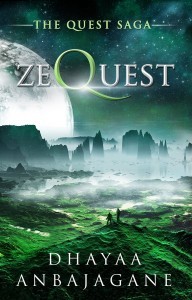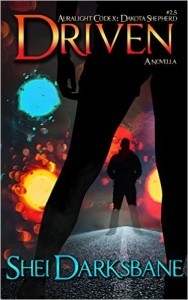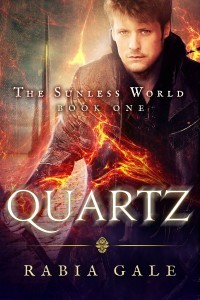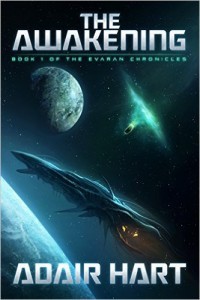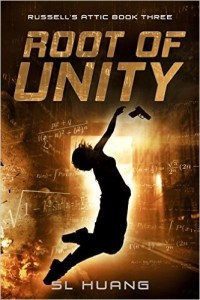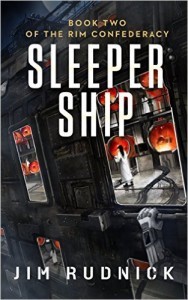Cora Buhlert's Blog, page 103
October 14, 2015
And another new release: Operation Rubber Ducky
I said yesterday that there would be more new release announcements coming up and here is the next one.
It’s another collection of short stories – three this time – to come out of the July Short Story Challenge, where I wrote a short story per day in July 2015.
One thing I noticed while writing so many stories in such a short period of time was that my critical side completely shut down after a while and my creative side came out to play. A lot of the stories I wrote during this time were unusual, a handful were downright bizarre.
Operation Rubber Ducky collects the three strangest stories to come out of the July Short Story Challenge. It collects stories of Kaiju, Trojan rubber ducks, anthropomorphic ducks working as mob enforcers and fluffy killer bunnies from outer space who are trying to conquer the Earth and exploit our mental health system for their nefarious ends, while they’re at it.
In short, these stories are strange, weird, bizarre and completely offbeat:
Operation Rubber Ducky Three short tales of anthropomorphic terror, featuring Trojan toys, axe-wielding ducks and fluffy killer rabbits from outer space.
Three short tales of anthropomorphic terror, featuring Trojan toys, axe-wielding ducks and fluffy killer rabbits from outer space.
When the world is besieged by Kaiju, the only weapon that can stop them turns out to be a rubber ducky with a deadly secret…
His name is whispered in terror: Mock Duck, the mad axe-man of Chinatown, deadly enforcer for the triads. No one has ever seen his face and lived to tell the tale. Which is probably for the better, because Mock Duck’s nickname is more accurate than anybody could have guessed…
It’s the latest psychiatric epidemic to sweep the nation: Angoraphobia, a pathological fear of fluffy angora sweaters. Those who suffer from the disorder claim that fluffy killer rabbits from outer space are trying to conquer the Earth and exterminate humanity. Are they merely deluded or could they perchance be right?
More information.
Length: 7000 words
List price: 0.99 USD, EUR or GBP
Buy it at Amazon US, Amazon UK, Amazon Germany, Amazon France, Amazon Netherlands, Amazon Spain, Amazon Italy, Amazon Canada, Amazon Australia, Amazon Brazil, Amazon Japan, Amazon India, Amazon Mexico, Kobo, Barnes & Noble, Apple iTunes, Scribd, Oyster, Smashwords, Inktera, txtr, Thalia, Weltbild, Hugendubel, Der Club, Libiro, Nook UK, DriveThruFiction, OmniLit/AllRomance e-books, Casa del Libro, Flipkart, e-Sentral and XinXii.
 Send to Kindle
Send to Kindle
October 13, 2015
New release: Children of the Stone Gods
I have a new release to announce. This time, it’s a collection of seven short stories on the borderline of science fiction and fantasy entitled Children of the Stone Gods.
The seven stories in Children of the Stone Gods were all written during the July short story challenge, where I wrote one short story per day in July 2015.
While doing the challenge, certain themes began to emerge after a while. One of these themes were stories that were science fiction and yet had more of a fantasy feel. Many of these stories were about lost worlds and long isolated planets, where the hulls of crashed spaceships and other remnants of higher technology litter the landscape, even though science and technology itself have long turned into myth and legend.
Children of the Stone Gods collects seven of those stories.
I haven’t published all of the stories from the July challenge yet, so expect more announcements in the near future.
Children of the Stone Gods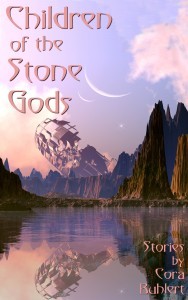 This is a collection of seven tales on the borderline of science fiction and fantasy. Seven stories of lost worlds, where carcasses of crashed spaceships litter the landscape and science and technology have long turned into myth and legend.
This is a collection of seven tales on the borderline of science fiction and fantasy. Seven stories of lost worlds, where carcasses of crashed spaceships litter the landscape and science and technology have long turned into myth and legend.
Enter a world of sacrifices and stone gods, where people live in the hulls of the great space arks that brought their ancestors to this planet, where four-armed assassins ply their trade and wandering priests warn of great cataclysms, where gods lie sleeping inside mountains and strange lights shine in the sky by night.
This is a collection of seven short science fiction tales of 12000 words or approximately 40 print pages altogether.
More information.
Length: 12000 words
List price: 2.99 USD, EUR or GBP
Buy it at Amazon US, Amazon UK, Amazon Germany, Amazon France, Amazon Netherlands, Amazon Spain, Amazon Italy, Amazon Canada, Amazon Australia, Amazon Brazil, Amazon Japan, Amazon India, Amazon Mexico, Kobo, Barnes & Noble, Apple iTunes, Scribd, Oyster, Smashwords, Inktera, txtr, Thalia, Weltbild, Hugendubel, Der Club, Libiro, Nook UK, DriveThruFiction, OmniLit/AllRomance e-books, Casa del Libro, Flipkart, e-Sentral and XinXii.
 Send to Kindle
Send to Kindle
October 8, 2015
Photos: Toadstools
The meadow across from my house is currently home to a colony of toadstools of the species Amanita muscaria or fly agaric. They’re very pretty, very toxic and a traditional good luck symbol.
According to Norse legend, fly agaric mushrooms grow either where Odin’s horse Sleipnir has left spittle on the ground or where some of Odin’t entourage have fallen from their horses. So I guess a whole company of Asgardians landed on my meadow while I wasn’t looking. If they looked like their counterparts in the Marvel movies, I wouldn’t even mind.
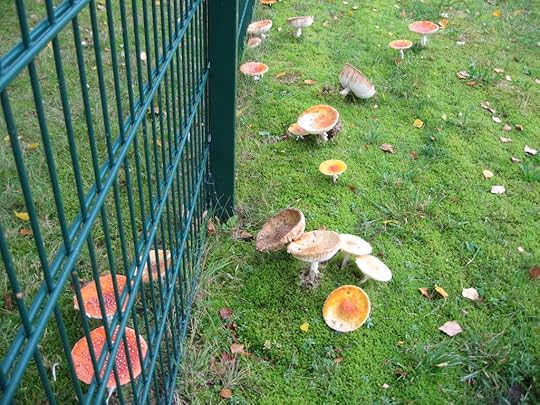
A whole colony of toadstools has sprung upon both sides of the fence. Seeing so many in one place is rare.

Three toadstools, one of which is already a bit battered.

Take a look at this beautifully patterned toadstool. Alas, it’s as poisonous as it is pretty.

This particular toadstool looks more like a New Year’s decoration, but it’s 100% real.
 Send to Kindle
Send to Kindle
October 7, 2015
Missile Hill Revisited, now with bonus pumpkins
Back in 2012, I posted about a place near the town of Syke colloquially known as Missile Hill, an abandoned US Army installation turned nature preserve with look-out tower. Unfortunately, I couldn’t take any photos from the top of the look-out tower back then, because the battery of my camera died.
Last week, I drove out to Gessen-Leerßen, a village near Syke again, to buy pumpkins, since those in my own garden did not bear fruit this year. And since it was a clear and sunny day, I took the opportunity to take a stroll around the “Hoher Berg” (high mountain, since it’s the highest elevation in the area. High means 65 meters above sea level in this case – North Germany is flat) and climb the look-out tower. And unlike last time, I made sure that my camera battery was fully charged.
So here are some photos of Syke’s own high mountain as well as of the farm where I bought the pumpkins:

A colourful display of pumpkins and gourds at Hof Klocke in Gessel-Leerßen

A selection of pumpkins and decorative gourds for sale at Hof Klocke in Leerßen. The sign indicates that they also sell fresh eggs.

An old potato crate holds several decorated pumpkins.

Squashes and pumpkins are laid out in the shape of a flower.

The first thing you see when you climb the “Hoher Berg” is wilderness, since the area is now a nature preserve.

A glimpse of the remaining buildings of the abandoned US military base “Hoher Berg”, seen through the shrubbery that has since grown here.

The remnants of the old US military basis “Hoher Berg”. The plattform in front used to hold the radar dome, which was visible from afar.

An apple tree grows defiantly next to the radar plattform.

An overview of the remains of the military base on Hoher Berg, shot from the top of the look-out tower.
For more information about the former US Army base on “Hoher Berg” and photos of what it used to look like, check out this detailed site. During the Cold War, the base housed Nike Hercules air defence missiles, including some equipped with nuclear warheads, which confirms the suspicions many people in the area had.

This 13-meter-tall look-out tower overlooks the Weser glacial valley.

Another view of the look-out tower. The Aeolian harps visible in the 2012 photos are gone by now.

And yet another view of the look-out tower, seen through some trees.

A view across the Weser glacial valley from the top of the look-out tower.

A view with a zoom from the top of the look-out tower. On the horizon you can see the high rise buildings of the Bremen suburb of Osterholz-Tenever as well as the Weserwehr power station.

Another zoomed in view from the look-out tower. On the horizon, you can see Bremen city center as well as the harbour.

Wind turbines are abaundant throughout North Germany. The four smaller wind turbines in front were among the first built in our area in the early 1990s. On the horizon, you can see a lot more wind turbines.

A look in the other direction, towards the village of Leerßen. The paved area in front is part of the old army base. Note the many con trails caused by airplanes starting and landing at Bremen Airport.

There’s also a playgournd on the “Hoher Berg”, which is frequented by local children.
 Send to Kindle
Send to Kindle
October 6, 2015
A Few Shout-outs – Ein paar Lesetipps
First of all, Swedish crime fiction write Henning Mankell died of cancer, aged only 67. He was best known for the Kurt Wallander mysteries, though he also wrote other things.
Now I’ve never read any of his novels, though I watched the Wallander TV adaptations starring Kenneth Branagh. However, my Mom was a big fan of the Wallander novels and was quite literally devastated to hear of Henning Mankell’s death.
***
I will have a new release of my own to announce in the next few days, but for now I want to offer a shout-out to some books and stories I haven’t written, but that I nonetheless had some involvement with.
Let’s start with a science fiction story in which I was tuckerized, which is very cool indeed.
The story is called “Hullaboo on Cora” (yes, I was tuckerized as a planet) by Floyd Looney and you can read it online at Aurora Wolf.
Regular readers of this blog will probably know that I’m a professional translator. I usually translate technical, legal and business documents, not fiction (unless it’s my own). However, this summer I was engaged in proofreading the German translations of three indie novels in two very different genres. And yes, switching between Regency romance and dystopian science fiction can be quite disconcerting.
Let’s start with the Regency romance.
Elizabeth Ann West has carved out a niche for herself in the field of Jane Austen reimaginations. Two of her novellas have been translated into German so far, one of which I proofread. The translator is Peggy Strachan of Triple Text Translations.
 Ein Pferd! Ein Ärgernis! von Elizabeth Ann West, übersetzt von Peggy Strachan:
Ein Pferd! Ein Ärgernis! von Elizabeth Ann West, übersetzt von Peggy Strachan:
Als Elisabeth Bennet während eines ihrer vielen Spaziergänge auf ein reiterloses schwarzes Pferd trifft, begibt sie sich eigenhändig auf die Suche. Sie findet einen Gentleman in der Böschung eines Bachbetts, verjagt Schlangen, holt Hilfe und bringt ihn letztendlich für seine Genesung nach Longbourn. Verliebt in seine dunklen Locken und in sein attraktives Gesicht scheint ihr Leben den romantischen Geschichten ihrer Romane zu folgen. Bis der stolze und arrogante Fitzwilliam Darcy of Pemberley aufwacht.
Die romantische Novelle ‘Ein Pferd! Ein Ärgernis!’ ist als leichte Lektüre für alle gedacht, die hoffnungslos von Jane Austens Welt verzaubert sind. Der Schreibstil soll keine Imitation der unvergleichlichen Jane sein und die Autorin hofft, dass Sie diese lustige und humorvolle Geschichte wie Ihren Nachmittagskaffee genießen werden.
Erhältlich bei Amazon Deutschland, Amazon USA, Amazon UK, Amazon Niederlande, Amazon Frankreich, Amazon Italien, Amazon Spanien, Amazon Canada, Amazon Australien, Amazon Brasilien, Amazon Mexico, Amazon Japan und Amazon Indien.
And now for something completely different:
David VanDyke writes action-packed military and dystopian science fiction. The first two novels of his Plague Wars series have been translated into German and I proofread both of them:
 Die Eden-Seuche von David VanDyke, übersetzt von Frank Dietz:
Die Eden-Seuche von David VanDyke, übersetzt von Frank Dietz:
Heute schon Zeit in einem guten Techno-Thriller verbracht? Halbfinal-Gewinner des Best Indie Award von Kindle Book Reviews 2013 (Englisch Version).
Als Afghanistan-Veteran Daniel Markis in seinem Haus bewaffnete Eindringlinge vorfindet und eine Schießerei einsetzt, muss er erstaunt mit ansehen, wie die Wunden einer Frau vor seinen Augen verheilen. Was macht diese Frau so besonders? Bald erfährt er das Geheimnis: Ein Wunder der Wissenschaft, lange vergessen und verloren geglaubt seit dem Untergang der Sowjetunion, wurde wieder entdeckt – und es wird die Welt für immer verändern. Als Daniel bemerkt, dass das Militär diese gentechnologische Erfindung als Waffe einsetzen will, wendet er sich an seine ehemaligen Kameraden, um die Frau zu finden und den Plan der Regierung zu durchkreuzen.
Ein Action-reicher Militär-Thriller vom amerikanischen Bestseller-Autor David VanDyke, mit über 350 Rezensionen im amerikanischen Kindle-Store.
Dieser apokalyptische Science-Fiction-Thriller wird die Vorstellungskraft von Lesern fesseln, die rasante Action-Abenteuer lieben. Keine Zombies kamen in der Produktion dieses Buchs zu Schaden. Es kommen überhaupt keine Zombies darin vor. Im Ernst. Dies ist kein Zombie-Buch.
Die Seuchenkriege-Serie, eine futuristische Militär-Thriller-Serie, beginnt in der heutigen Zeit mit einem Mann und einer Frau, die vom Schicksal zusammengeführt und dazu auserwählt wurden, die Welt ein für alle Mal zu verändern. Die Serie entführt den Leser in eine immer trostlosere Zukunft voller Turbulenzen, Kampf und Krieg, gekennzeichnet von den Tiefen des Bösen und den Höhen selbstloser Opferbereitschaft. Seuchen, geheime Technologien und außerirdische Einmischung bilden die Leinwand, vor der Helden und Schurken um die Kontrolle über das Schicksal der Menschheit kämpfen.
Bücher der Seuchenkriege-Serie (auf Deutsch):
– Die Eden-Seuche
– Reapers Rennen
– Skulls Schatten
Erhältlich bei Amazon Deutschland, Amazon USA, Amazon UK, Amazon Niederlande, Amazon Frankreich, Amazon Italien, Amazon Spanien, Amazon Canada, Amazon Australien, Amazon Brasilien, Amazon Mexico, Amazon Japan und Amazon Indien.
 Reapers Rennen von David VanDyke, übersetzt von Frank Dietz:
Reapers Rennen von David VanDyke, übersetzt von Frank Dietz:
Heute schon Zeit in einem guten Buch verbracht? „Alles, was eine gute Story ausmacht, findet sich zwischen diesen Seiten … Diese temporeiche Lektüre stellt genau die Fragen, die man von einem in der nahen Zukunft spielenden Thriller erwartet, doch sie tut es mit Frische und Ausdruckskraft und – wenn ich das sagen darf – einer moralischen Richtschnur, die man in vielen anderen Büchern dieser Art vermisst.“ — Charles de Lint: Books to Look For, Fantasy and Science Fiction Magazine (Juli/August 2014)
Als US-Marine-Sergeant Jill Repeths weggesprengte Beine plötzlich anfangen, sich zu regenerieren, glaubt sie erst an ein medizinisches Wunder. Doch der Durchbruch, der ihre Kriegsverletzungen heilen lässt, ist auch genau das, was die Regierung unter allen Umständen vernichten will. Gejagt von der Obrigkeit muss sie ein von Unruhen zerrissenes Land durchqueren, auf der Suche nach einer Familie, die vielleicht schon tot ist, und nach dem unmenschlichen Geheimnis, mit dem alles begann.
Reapers Rennen, ein apokalyptischer Science-Fiction-Thriller, zeichnet den Weg einer wahren Kriegerin von der Berufssoldatin zur Freiheitskämpferin und weit mehr. Er führt den Leser in die von Kritikern gefeierte Seuchenkriege-Serie von futuristischen Techno-Thrillern ein.
Bücher der Seuchenkriege-Serie (auf Deutsch):
– Die Eden-Seuche
– Reapers Rennen
– Skulls Schatten
Erhältlich bei Amazon Deutschland, Amazon USA, Amazon UK, Amazon Niederlande, Amazon Frankreich, Amazon Italien, Amazon Spanien, Amazon Canada, Amazon Australien, Amazon Brasilien, Amazon Mexico, Amazon Japan und Amazon Indien.
 Send to Kindle
Send to Kindle
October 5, 2015
A Hot Air Balloon on a Misty Morning
Early on Sunday morning, I was awoken by the distinctive hiss of the gas burner of a hot air balloon.
I got up, grabbed my camera, looked out of every window on the first floor and was finally able to capture this photo:
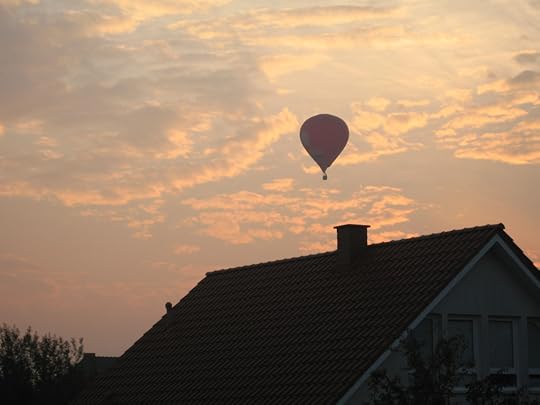
A hot air balloon floats above the roof of the neighbouring house.
 Send to Kindle
Send to Kindle
October 3, 2015
Das Literarische Quartett Reloaded
Hot on the heels of the deaths of Hellmuth Karasek, one third of the original Literarisches Quartett (no, that’s not a typo), came the revival of what was once the preeminent literary program on German TV.
So what is Das Literarische Quartett? It’s a program where four literary critics – three regulars and a guest critic – discuss books, mostly literary fiction, mostly new releases, but also memoirs and the occasional classic. Put that way, it sounds boring, which is not fair, because in its original form, Das Literarische Quartett was frequently the funniest and most entertaining program on German TV. It didn’t matter if you had read the books or if you had any interest in them at all (though looking back, it’s interesting how many future classics and/or award winners were discussed at the Quartett), because the real reason people were watching a literature program in a Friday night graveyard slot was the interplay of the three regulars, Marcel Reich-Ranicki, Hellmuth Karasek and Sigrid Löffler, and how they tore both into the books discussed and each other. For those who want to know what the original Literarisches Quartett was like, there are plenty of clips and even full episodes on YouTube. Meanwhile, the new program is also available online at the ZDF mediathek.
The fact that the three regular critics and their personalities was a large part of the reason for watching Das Literarische Quartett in the first place was also the main hurdle for the reboot to overcome. For the shadows of Marcel Reich-Ranicki, Hellmuth Karasek and Sigrid Löffler loom large, even though or maybe because two of them, Reich-Ranicki and Karasek, are no longer with us.
If anything the new guys, critics Volker Weidermann, Christine Westermann and Maxim Biller, tried a bit too hard to channel the originals. It doesn’t help that the set-up, two guys and one woman plus one guest critic, is identical to the original. One of the new regulars, Maxim Biller, is even Jewish, just like Marcel Reich-Ranicki in the original. And since the parallels were obvious to everybody anyway, Maxim Biller clearly decided that he was going to channel Reich-Ranicki, complete with acerbic remarks and arguing with fellow critics, and he obviously relished the role. Not surprising, considering that Reich-Ranicki was everybody’s favourite in the original. Weidermann quickly fell into the peacemaking Hellmuth Karasek role, leaving the thankless Sigrid Löffler part to Christine Westermann, who clearly did not want to fill it (well, no one ever wanted to be Sigrid Löffler) and instead remained rather pale, leaving Maxim Biller to argue with this week’s guest critic, lawyer and writer (even of SF on occasion) Juli Zeh, who rather obligingly played Sigrid Löffler to Biller’s Reich-Ranicki.
So we did get the expected arguing, but there was just one problem. I’d much rather watch Maxim Biller, Volker Weidermann and Christine Westermann (and Juli Zeh) be themselves than pale imitations of Marcel Reich-Ranicki, Hellmuth Karasek and Sigrid Löffler. Because at the moment, it seems as if Biller, Weidermann and Westermann are just playing roles, whereas Reich-Ranicki, Karasek and Löffler were not acting (as we all found out during the epic blow-up between Marcel Reich-Ranicki and Sigrid Löffler over a Haruki Murakami novel, which ended with Löffler walking out), they actually were being themselves. And it isn’t as if the three new people don’t have the potential to be interesting in themselves, though both Weidermann and Westermann remained rather bland. Meanwhile, Maxim Biller is one of the very few people in postwar Germany to have a novel banned for allegedly violating the personality rights of Biller’s ex-girlfriend and her mother, a decision that many people found deeply troubling. A summary of the whole sordid saga surrounding Biller’s novel Esra may be found here.
Besides, great as the original Literarisches Quartett was, one aspect that I wouldn’t be sorry to see gone are the dated boys vs. girls gender dynamics of the two male regulars teaming up against the lone female regular. Because though I never particularly liked Sigrid Löffler (I don’t think anybody did – she was always the boring one), I still find the way in which she was treated and particularly how her treatment was linked to her gender troubling. So yes, let the regulars of Das Literarische Quartett argue their hearts out – that’s why we’re watching after all – but don’t turn it into boys versus girls again.
But while it was only to be expected that the three regulars would still need to find their feet – after all, the first episode of the original Literarisches Quartett probably did not look like the show we all loved either – another issue that will probably be less easy to resolve is the length of the program. Now the original Literarisches Quartett was 75 minutes long and discussed four or five books in those 75 minutes, which gave the critics plenty of space to discuss the books and even go off on those weird tangents that often made the program so magical.
However, in the more fast paced and regimented TV world of the 21st century, few programs that are not prestige drama or what passes for it these days are given 75 minutes. And a cultural niche program most certainly doesn’t get 75 minutes these days, especially not if some of that time could be used to run bad comedy programs instead (and comedy programs have been steadily encroaching on the Friday night culture programming slot in the past ten years or so). So the new Literarisches Quartett was only 45 minutes long – the same length as the general culture program aspekte, whose timeslot it takes over once a month – divided among four books.
The lack of time spent on each book definitely showed, because several potentially interesting discussions, e.g. about cliched western expectations of African literature, about religious imagery in a largely atheist culture, how books chronicling the pain of white dudes resonate with – guess whom? – white dudes, etc…, were all nipped in the bud. Honestly, the program either needs more time or fewer books.
As for the books themselves, they were a nicely diverse range of ethnicities and subjects with The Fisherman by Nigerian writer Chogozie Obioma (which is also on the Booker Prize shortlist this year – Biller loved it, Westermann and Zeh did not), Macht und Widerstand by Bulgarian-German writer Ilja Trojanow (which Weidermann and Biller really did not like, though Trojanov’s occasional co-writer Juli Zeh did), one of the volumes of My Struggle by Norwegian writer Karl Ove Knausgård (the two male critics really liked it – well, duh) and Fever at Dawn by Hungarian writer and filmmaker Péter Gárdos, which was pretty much shredded by everybody. The range of ethnicities and subject matter was pleasantly diverse, though sadly all four books were written by men. This was a bit unfortunate, especially the “white dude pain” chronicled in the Karl Ove Knausgård novel would have needed a female counterpoint.
So now you’ve had my take, let’s see what German TV critics have to say:
T-Online agrees with me that Maxim Biller was channelling Marcel Reich-Ranicki pretty well, but that 45 minutes are much too short.
The Süddeutsche Zeitung also believes that 45 minutes are much too short (Are you listening, ZDF?), felt that Maxim Biller was the most televisional of the three regulars (though Christine Westermann actually has been co-hosting a show where celebrities have to apply for a free room in a flat share for almost twenty years now – yes, this is a thing) and was amused that Volker Weidermann, who is probably the most powerful literary critic in Germany as head of the culture department of Der Spiegel (like Hellmuth Karasek before him) and nominal head of the new Literarisches Quartett, seemed more like a frightened antelope caught in the headlights.
Der Spiegel thinks that the new Literarisches Quartett is pleasantly old-fashioned and very reminiscent of the original, but too short (I detect a pattern here).
Die Welt also believes the program was too short (all right, ZDF, just give us 60 minutes) and liked Biller best.
Die Presse also thinks that the program was too short and seemed hastened.
Literaturcafe agrees that the program seemed hastened and that the three regulars don’t yet feel like a team.
Deutschlandradio Berlin agrees that the program was too short and finds that gendered two men teaming up against a woman pattern borrowed from the original rather dated.
n-tv thinks that Das Literarische Quartett is better than Star Trek, a reference to a remark by Maxim Biller that none of the latter Star Treks ever came close to the original, which may well be the most controversial thing Biller said lately (though for Germany, it’s probably true, because the 1960s style dubbing made the original Star Trek a lot funnier than it was).
The tageszeitung lets an 18-year-old intern who only ever saw the original program on YouTube share his thoughts about the reboot.
The Frankfurter Allgemeine Zeitung says that the three regulars seemed as if they were playing parts rather than being themselves and also wonders whether a program like Das Literarische Quartett still fits into the 21st century, where professional critics have long given way to “hordes of amateur critics on the internet”.
The last point is interesting, because I very much believe that the 21st century has not just room for a program like Das Literarische Quartett, but also for serious literary criticism. Because at least for me, consumer reviews at Amazon and similar places don’t replace in-depth criticism. I do pay attention to reviews and reviewers I trust (not necessarily by professionals – e.g. I’d rather trust a bookblogger whom I know shares my taste than a professional newspaper review), but consumer reviews at Amazon, Yelp, tripadvisor, etc… play hardly any role for me when deciding which book to read next, where to eat and where to stay on holiday, which products to buy, etc… because they rarely match my personal preferences.
Of course, the Literarisches Quartett never really matched my preferences either and indeed they usually discuss books that I’d never even consider reading. But I get a kick out of listening to other people – particularly smart and insightful people – discussing books, whether I actually want to read them or not.
 Send to Kindle
Send to Kindle
September 30, 2015
Two more literary deaths: Hellmuth Karasek and Ellis Kaut
2015 has been a bad year for German literature and a bad year for celebrity deaths in general.
Now we lost two more literary greats in the space of a few days, critic and writer Hellmuth Karasek, who died yesterday aged 81, and children’s book writer Ellis Kaut, who died last week aged 94.
Ellis Kaut is probably familiar to anybody who grew up in (West) Germany between the 1960s and now. The mischievous kobold Pumuckl and his reluctant human friend master carpenter Meister Eder are probably the best known, though Ellis Kaut also created other characters such as the Kater Musch, a talking black cat. Pumuckl appeared in radio plays and books and even spawned a TV series in the 1980s. The first episode is here. Both Gustl Bayerhammer, the actor who played Meister Eder, and Hans Clarin*, the actor who provided Pumuckl’s voice, have been gone for several years now. When Pumuckl was slimmed down for a new edition of Ellis Kaut’s books, a firestorm broke out and Pumuckl got his babyfat back. Coincidentally, Pumuckl drinks alcohol on occasion (beer mostly, but also cherry liqueur), unimaginable for US children’s book characters.
The Süddeutsche Zeitung has an obituary for Ellis Kaut, looks for traces that both Ellis Kaut and her most famous creation Pumuckl left their hometown in Munich. There is also an article where various Süddeutsche Zeitung journalists share their memories of Ellis Kaut and Pumuckl.
With the recent death of Max Kruse and the death of Otfried Preußler in 2013 and the even earlier deaths of Michael Ende and Astrid Lindgren pretty much all the authors I read as a kid are now gone. It’s probably just a sign of aging, but it still makes me sad.
Talking of cultural touchstones, if you were a literature geek in postwar (West) Germany, the late Hellmuth Karasek will probably have been one of your cultural touchstones. Together with the late Marcel Reich-Ranicki, whom we lost in 2013, and Sigrid Löffler, Hellmuth Karasek made up one third of Das Literarische Quartett, the best literature program not just on German TV but on TV anywhere. For anyone who’s never seen the show, it’s hard to imagine that 75 minutes of four people (Reich-Ranicki, Karasek, Löffler and a guest critic) talking about books could be fantastically entertaining, but it was. Luckily, YouTube has plenty of clips and even full episodes.
What made Das Literarische Quartett so good was the snarky interplay between the three critics (plus guest critic). I always assumed that the sniping was purely for show and that Reich-Ranicki, Karasek and Löffler were best friends in real life, which is why I was shocked when Sigrid Löffler walked out after a disagreement with Marcel Reich-Ranicki about a Haruki Murakami novel (the relevant bit is on YouTube here). However, Hellmuth Karasek and Marcel Reich-Ranicki actually were friends. Here is a clip of them talking about their friendship (and dissing Sigrid Löffler) in the chat show Beckmann. What makes this friendship even more unusual is that Marcel Reich-Ranicki was a Jewish Holocaust survivor, while Hellmuth Karasek had been a student at one of the Nazi elite boarding schools known as Napolas.
Die Zeit, where Hellmuth Karasek worked as a critic, has an obituary, as does Der Spiegel where he was head of the culture department for twenty years. Here is also an English language obituary courtesy of Deutsche Welle.
I think every Literarisches Quartett fan has a favourite Reich-Ranicki moment. It’s more difficult to remember a favourite Karasek moment, since he was usually the calming foil to the explosive Marcel Reich-Ranicki. However, Hellmuth Karasek uttered the line that has long guiding my own reading namely, “Das Leben ist zu kurz für schlechte Bücher” (Life is too short for bad books).
For a taste of how funny Hellmuth Karasek could be, check out this video of him reviewing the IKEA catalogue, shot barely a month before his death.
Coincidentally, Das Literarische Quartett is coming back to TV this Friday after fifteen years off the air, featuring critics Volker Weidermann, Maxim Biller and Christine Westermann and a guest.
It remains to be seen whether the reboot will be as good as the original, though one thing is for sure: Hellmuth Karasek along with Marcel Reich-Ranicki will be sorely missed.
*Few things were freakier than seeing Hans Clarin play a psychopathic killer who has an incestous relationship with his mother in the Edgar Wallace thriller Das Indische Tuch (The Indian Scarf), because Pumuckl or rather his voice doesn’t murder people.
 Send to Kindle
Send to Kindle
September 29, 2015
Indie Speculative Fiction of the Month for September 2015
 It’s that time of the month again, time for “Indie Speculative Fiction of the Month”.
It’s that time of the month again, time for “Indie Speculative Fiction of the Month”.
So what is “Indie Speculative Fiction of the Month”? It’s a round-up of speculative fiction by indie authors newly published this month, though some August books I missed the last time around snuck in as well. The books are arranged in alphabetical order by author. So far, most links only go to Amazon.com, though I may add other retailers for future editions.
Once again, we have new releases covering the whole broad spectrum of speculative fiction. We have science fiction, space opera, science fantasy, paranormal romance, post-apocalyptic fiction, dystopian fiction, near future science fiction, YA science fiction, YA fantasy, epic fantasy, urban fantasy, fairytale retellings, alternate history, time travel, intergalactic prison breaks, interplanetary wars, interactive zombies, fallen angels, dashing spies, super-mathematicians, wizards, witches, werewolves, aliens, robots, immortal demon hunters, cryogenic freezing, magical Vegas weekends, death in love, lots of LGBT characters and much more.
Don’t forget that Indie Speculative Fiction of the Month is also crossposted to the Speculative Fiction Showcase, a group blog run by Jessica Rydill and myself, which features new release spotlights, guest posts, interviews and link round-ups regarding all things speculative fiction several times per week.
As always, I know the authors at least vaguely, but I haven’t read all of the books, so Caveat emptor.
And now on to the books without further ado:
A soldier wakes, possibly the last survivor of a brutal attack by machines intent on destroying humanity, but all is not as it seems in this thrilling futuristic tale with a twist that will make you want to read it all over again.
Armorica was an ancient planet filled with luscious fields, towering forests, and crystal clear streams.
And now, it was going to be destroyed.
When Armorica’s very existence is threatened by an enemy planet, Q is left with no other choice but to take matters into his own hands and prevent a inter-planetary massacre from breaking out. But one question remained unanswered : How was he supposed to take down an entire planet?
Thrilling, Plot-twisting and mysterious, ZeQuest explores the nature of a selfish world, where nothing is ever what it seems to be.
This is book 2 of the Quest Saga, following ConQuest.
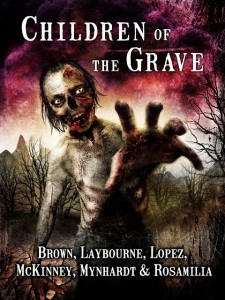 Children of the Grave by Tonia Brown, Alex Laybourne, Aurelio Lopez III, Joe McKinney, Joe Mynhardt and Armand Rosamilia:
Children of the Grave by Tonia Brown, Alex Laybourne, Aurelio Lopez III, Joe McKinney, Joe Mynhardt and Armand Rosamilia:
Six talented zombie authors take on the Afterlife in an interactive shared-world zombie anthology.
Welcome to Purgatory, an arid plain of existence where zombies are the least of your problems. It’s a post-mortem Hunger Games, and Blaze, a newcomer to Purgatory, needs your help to learn the rules of this world and choose the best course of action.
Purgatory is escapable, so aid Blaze to win the favor of the ruling Gatherers by earning this right. But what’s waiting outside Purgatory, is beyond what the human mind can fathom.
His fate. Your choices.
Your six different choices are penned by Joe McKinney, Armand Rosamilia, Tonia Brown, Joe Mynhardt, Aurelio Lopez III, and Alex Laybourne.
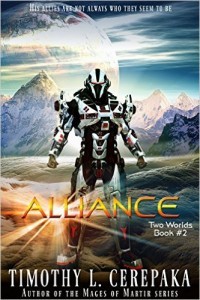 Alliance by Timothy L. Cerepaka:
Alliance by Timothy L. Cerepaka:
His allies are not always who they seem to be.
The law enforcement robot known as J997 travels to the magical and mystical world of Dela after a criminal wanted on his homeworld of Xeeo. His mission is simple: Find the criminal and bring her back to his world to be judged for her crimes. With an entire database in his head that contains information on everything in the two worlds, and an unflappable desire to pursue the criminal, J997 is certain that this job will be quick.
But the mission becomes more complicated when J997 is caught between two secret organizations whose conflict goes back to the dawn of the two worlds themselves. J997 must now avoid getting caught in the crossfire if he is going to return home to Xeeo in one piece. Unless the two organizations have anything to say about it.
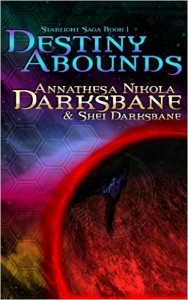 Destiny Abounds by Annathesa Nikola and Shei Darksbane:
Destiny Abounds by Annathesa Nikola and Shei Darksbane:
On the prison world of Urebai, a notorious Prisoner breaks free of her chains once more. On primeval Fade, a decorated warrior flees her home for the stars to escape her past. And under the light of a distant star, a solitary pilot prepares to make the ultimate sacrifice for her people.
This is how the tale begins.
Branwen Hawke left behind the swords and castles of her homeworld to take solace from the war that consumed most of her life. After stumbling into the role of captain of a one-of-a-kind starship with an unlikely crew, she must find a way to keep them together and thriving. But even with years of experience commanding troops, Branwen has her hands full with a lost pilot from a distant world, an engineer with crippling anxiety, an innocent young medic with a secret, a renowned Kala, and her insanely dangerous baggage.
Now tasked with an important mission that could make or break the crew’s reputation, Branwen must face her inner turmoil and find some sort of peace despite the struggles she can’t escape, while safeguarding the lives that have fallen so fatefully into her hands.
Dakota Shepherd never thought learning to drive could be such a pain. It seems like every truck she touches ends up dead, but Raelya kindly offers to teach her anyway. Her first lesson in a secluded lot seems to be going pretty well, until someone ends up dead there too.
A sleepless night. An untold tale. A deadly betrayal.
Dakota stumbles upon a long-held secret that could tear the pack apart. Tasked with settling a decades-old score, Dakota is driven to seek justice and set things to rights before an unforgivable crime goes unpunished forever.
 Of Books, and Earth, and Courtship by Aliette de Bodard:
Of Books, and Earth, and Courtship by Aliette de Bodard:
In a Paris that never was, a city of magical factions where Fallen angels mingle with magicians, alchemists and witches…
Emmanuelle is the Fallen archivist of House Silverspires, and only wants a quiet life with her books. But when Selene, the latest student of Lucifer Morningstar, walks into the library, Emmanuelle finds herself drawn in an adventure to steal from another House. It’s a thrilling and dangerous task, but the most dangerous thing about it might just be Selene herself–aloof and resourceful, and unexpectedly attractive…
Set in the universe of the critically acclaimed The House of Shattered Wings.
A sunless world. The lost Tower of Light. And the race to find it.
Rafe Grenfeld, diplomat and spy, has problems.
He’s just learned of the discovery of a legendary quartz pillar: his world’s most precious resource. But his informer died before revealing its location, and Rafe’s on the run in the hostile state of Blackstone.
Once, quartz powered magical devices, but the mages who created them are long gone. Now, veins of quartz give light to a dying world, and Rafe has competition.
Karzov, the notorious chief of Blackstone’s secret police, is also hunting for the pillar. Determined to claim it for his own country, Rafe forms an uneasy alliance with the mysterious and maddening Isabella. As dangerous magical artifacts resurface and dark forces close in, Rafe must tap into the lost powers of the mages to find and secure the quartz—before his world is torn apart by famine and war.
Baby has lived a privileged life—her father always said she was “special.” And Baby knows she’s not like normal humans. She’s only 47 inches tall, even though she’s eighteen years old. She can live off tiny amounts of food. And she’s got a dorsal fin in the middle of her back.
Today’s the big day. She’s supposed to model for the world, and make her father proud. The only questions are why is she so nervous, and why won’t her father let her out of the lab? Most of all, Baby, also known as Model 37, wants to see the world.
Maybe even meet another “special” person like her.
Bonus short story: The Nannypod
It’s Monday morning, and Chris has to get to work. The only problem is, his Nannypod, the device strapped to his wrist that runs his life, just died. He doesn’t even know which bus to get on.
How will he live without it?
A heavily damaged alien research vessel in the Andromeda galaxy is hurtling toward a planet. The aliens should not be there. They have been traveling through space and time, abducting apex predators and sticking them in virtual simulations for research. The problem is the virtual simulations are powering down, unleashing the specimens on the ship.
Dr. Albert Snowden and his niece, Emily, were abducted by the aliens. They are visited by a mysterious being named Evaran in the last minutes of the virtual simulation.He has decided to interfere in this timeline-changing event and rescue them.
Stopping the ship from crashing into the planet before getting to Evaran’s ship is one issue. Navigating the apex predators on the loose is another. To make matters worse, Jerzan Graduul, infamous leader of the Bloodbore mercenary pack, has boarded the ship in search of salvage opportunities, and has noticed Evaran’s ship. The hunt begins.
 Hartshire Noble Council by R.D. Henderson:
Hartshire Noble Council by R.D. Henderson:
Luigi Darkhawk is a mage and head of the Hartshire Noble Council which is a mysterious and anonymous civic organization that metes out justice to and for the city’s criminal underworld.
As the head of the noble council, he takes advantage of his position by doing favors for criminals in exchange for bribes and other illicit considerations which enables him to have a very nice life and own very nice things, including a penthouse suite in the most expensive hotel in the city.
While he enjoys the benefits of his position on the noble council, an assassin is killing members of the noble council and innocent by-standers with black bolts each containing magic-based explosive component. (Could these black bolts be the same black bolts stolen from Nambroc, the black elf city in the Nether Realm?) The city’s criminal underworld as well as the constables are scouring the city to find the person responsible for all the death and carnage.
At the same time of the assassinations, rumors are swirling about that there could be black elves hiding among the populace of the city. (Could the assassin be a black elf?)
Luigi wants to keep the status quo in the city because he wants to maintain is very nice life, but he knows the assassins needs to be stopped.
If the assassin is not caught, not being able to maintain his very nice life would be the least of his worries. Luigi could be the next victim of the assassin, and certainly does not want that to happen.
Hartshire Noble Council is the fifth novella in the Nambroc Sequence, a fantasy series.
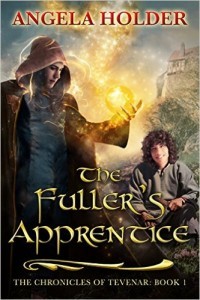 The Fuller’s Apprentice by Angela Holder:
The Fuller’s Apprentice by Angela Holder:
All Josiah wants is a little excitement. His work as an apprentice fuller is boring, and playing in the mill’s machinery isn’t that dangerous. Everything goes fine—at first.
All right, he’s lucky the wizard Elkan and his familiar, a donkey named Sar, are there to save his life. Even better, when his furious master fires him, Elkan offers him a job as his assistant. Josiah jumps at the chance. Traveling around Tevenar for a year, meeting all sorts of interesting people, helping the dedicated young wizard and clever donkey serve them with the Mother’s healing magic—what could be more fun?
But Josiah soon learns that while matters of life and death may be exciting, they’re seldom fun. Impulsive actions, even when taken with the best of intentions, can have devastating consequences. And some choices have the power to change the future of Tevenar forever.
Cas Russell has always used her superpowered mathematical skills to dodge snipers or take down enemies. Oh, yeah, and make as much money as possible on whatever unsavory gigs people will hire her for. But then one of her few friends asks a favor: help him track down a stolen math proof. One that, in the wrong hands, could crumble encryption protocols worldwide and utterly collapse global commerce.
Cas is immediately ducking car bombs and men with AKs — this is the type of math people are willing to kill for, and the U.S. government wants it as much as the bad guys do. But all that pales compared to what Cas learns from delving into the proof. Because the more she works on the case, the more she realizes something is very, very wrong . . . with her.
For the first time, Cas questions her own bizarre mathematical abilities. How far they reach. How they tie into the pieces of herself that are broken — or missing.
How the new proof might knit her brain back together . . . while making her more powerful than she’s ever imagined.
Desperate to fix her fractured self, Cas dives into the tangled layers of higher mathematics, frantic for numerical power that might not even be possible — and willing to do anything, betray anyone, to get it.
 Jacks Are Wild by Monique Martin:
Jacks Are Wild by Monique Martin:
From the world of Out of Time comes the first book in a new series with Jack Wells!
Former OSS officer Jack Wells’s first assignment for the Council for Temporal Studies sounds deceptively simple—stop a murder before it happens. But as Jack soon finds out, there’s nothing simple about 1960 Las Vegas, especially when the woman you’re sent to save is a mobster’s wife.
Jack is joined by Simon and Elizabeth Cross as he struggles to stay alive long enough to stop Susan’s murder and protect a very fragile timeline.
 Lunar Discovery: Let the Space Race Begin by Salvador Mercer:
Lunar Discovery: Let the Space Race Begin by Salvador Mercer:
When a Chinese rover discovers an alien technology on the dark side of the moon, it is up to Richard ‘Rock’ Crandon and his NASA team of scientists and engineers to devise a way to return before the Chinese and Russians.
With pressure mounting, the world is pushed closer to conflict and potential war as the NASA team finds itself seriously behind in the newly initiated space race. The future of mankind, its ideological and technological advances are at stake, as the space race begins.
A Contemporary Sci-Fi, Techno-Thriller, by Salvador Mercer, Author of the Claire-Agon Fantasy World Books.
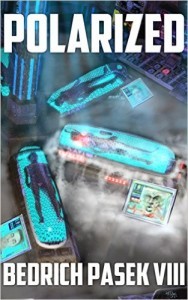 Polarized by Bedrich Pasek VIII:
Polarized by Bedrich Pasek VIII:
Scientists told Sebastian Collier that freezing a man for the trip to Triangulum was a simple procedure. Little more than a nap. But when the systems performing routine bodily maintenance go to great lengths to keep him alive, it’s debatable what emerges from his cryogenic chamber could be called a man at all.
Years after Sebastian’s mysterious death, his descendant Colonel J.D. Boskie is deployed to Triangulum to quash rebellion.
Fervent political discord has the planet eerily united in its antagonism toward mother Earth. Slick thieves are heisting so much of Triangulum’s resources that Earth’s economy is in ruins from the fallout. The planet’s as heartless as its automated factories. If they’re building an army, well…
Boskie’s men think he’s too young. His heavy-handed commanding officer Luna “The Lunatic” doesn’t trust him. And Boskie needs the help of Lucia Meduse Rimbaud, the powerful Triangulese executive with dark eyes that the cherubim drew. She’s argumentative. Forbidden fruit. Infuriating. Doesn’t want anything to do with him.
She’s irresistible.
Boskie believes something big’s about to happen. He also believes he’s slipping into madness just like his ancestor did. He may be right.
 Mutation Z: Closing the Borders by Marilyn Peake:
Mutation Z: Closing the Borders by Marilyn Peake:
Eviscerated bodies are found along both sides of the U.S.-Mexico border. Military security is stepped up on both sides of the border. However, journalists are given free rein to explore the devastation. As more and more bodies are found, people begin to panic. Meanwhile in The Liberia Treatment and Research Camp of West Africa, Emma Johnson and Chibueze Koroma continue to receive experimental doses of Mutation Z. They also begin to remember the horrific things they’ve done. As journalist Hunter Morgan’s investigation leads him to that same Camp, his own little girl falls sick with fever.
MUTATION Z: CLOSING THE BORDERS is the second book in the MUTATION Z series, following The Ebola Zombies.
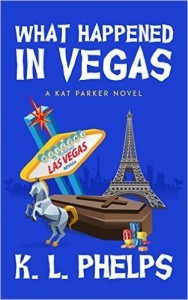 What Happened in Vegas by K.L. Phelps:
What Happened in Vegas by K.L. Phelps:
Her mother warned her not to go. It was supposed to be a carefree girls’ weekend in Vegas, but what Katrina got was magic, murder, and mayhem.
Swept off her feet by cute but geeky wizard Andrew Parker, Kat is caught in an age-old feud between vampires and lycans. The problem? If things go wrong, it could mean not only the end of her life, but every life in Vegas.
With a kidnapping, a magic carpet ride, and a quickie wedding, this Vegas weekend might be too wild even for Elvis.
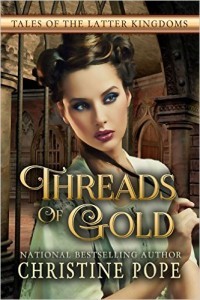 Threads of Gold by Christine Pope:
Threads of Gold by Christine Pope:
Unexpected help can lead to unexpected consequences…
When Annora Kelsden’s father gets her family into financial trouble, it’s up to her to save them. Unable to truly spin straw into gold, Annora despairs for her life. When a mysterious stranger offers to help, Annora desperately agrees to his terms, thankful for his assistance.
After the king receives the gold he desires, Annora believes she’s safe from harm, only to realize that she’s spun herself a trap with seemingly no end. But can the consequences lead her where she never expected — into the arms and heart of her mysterious savior?
A Rumplestiltskin tale spun with sweet sensuality….
 Her Eyes Match the Sky by P.J. Post:
Her Eyes Match the Sky by P.J. Post:
This romance brought to you by the end of the world…
She was looking forward to her junior year of high school, obsessing about prom, getting her driver’s license and maybe even meeting her first boyfriend, but September finds her on the run, from the bombings, from looters and much, much worse.
No more homecoming.
No more homeroom.
No more home.
The United States of America is dying, dragging civilization down with it. No electricity, no cars, no phones, no infrastructure, nothing but anarchy remains. The survivors, families and struggling communities are migrating west, away from the invading armies. Some are praying for the lights to come back on, but others are embracing the New World Order, living for today and taking what they need, but mostly, what they want.
Among them are the orphaned children, scraping by in the shadows with fewer and fewer surviving the cold nights of the approaching winter. But they don’t have to be the forgotten generation.
All they need is a leader.
And she’s found him. If she can keep him alive, they may all have a chance.
Feral is an ongoing serialized story. Episode 2, The Mark, is also available.
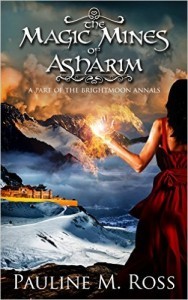 The Magic Mines of Asharim by Pauline M. Ross:
The Magic Mines of Asharim by Pauline M. Ross:
A fallen empire. A woman with dark secrets. A strange magical weapon.
The glorious Akk’asharan Empire was torn apart by treachery two hundred years ago, its water supply cut off. Now its people are enslaved and humiliated, but they have never forgotten the past, and dream of one day restoring their former greatness.
Allandra’s dreams are more immediate: how to control the powerful magical abilities that are ruining her life. After a disastrous outbreak of power, she’s desperate to escape from justice and find a place to grieve and recover. Perhaps the hidden mines of Asharim can provide a safe haven.
The mines can provide much more than that: not only a way to control her dangerous magic, but a magical weapon that might even restore the fallen empire to its rightful place. But with enemies on her trail, and powerful factions who will do anything to stop her, she will only get one chance. If she fails, the empire’s last hope will be lost forever.
From the magic mines of Asharim, no one emerges unchanged.
As penance for not being honest with his Admiral, Captain Tanner Scott has been sent on a boring routine maintenance mission of checking the RIM boundary buoys one after another and that lets him enjoy his Scotch in peace.
Imagine his surprise when a Sleeper ship suddenly arrives on the RIM and he learns that the thousands of alien Sleepers are all children! While making that known has already gotten RIM Confederacy realms fighting, the real hidden problem is the secret that a virus infects the alien Sleepers.
Finding out the Sleeper’s secret is one thing but the news of what that virus could bring to the RIM and what it might do is the real reason that a powerful RIM Royal realm wants to enslave the alien Sleepers.
When Captain Scott realizes that another RIM planetary realm has also learned what the virus could be worth, they too try to take over the Sleeper ship and that means that Tanner can’t as per usual self-medicate with Scotch but instead has to overcome the RIM’s adversaries and somehow save the alien Sleepers too!
 The Immortals by S.M. Schmitz:
The Immortals by S.M. Schmitz:
Colin and Anna have been hunting demons for a long time. But something is different in Baton Rouge. The rules are being broken and they’re powerless against some of the greatest forces Hell can assemble. If they can’t stop these demons from manipulating every rule of this war, then Heaven may lose the only battle that’s ever really mattered.
 Swords of Silver by Hollis Shiloh:
Swords of Silver by Hollis Shiloh:
Together at last, Holin and Kale are on the run from magicians and dragon-slayers alike, but utterly happy because they have each other.
Then one night, soldiers arrive and capture them both. Kale escapes with Holin’s help—and vows to return and rescue his beloved. But that might not be as easy as it sounds, even for a man like Kale.
 Unrevelations by Rissa Watkins:
Unrevelations by Rissa Watkins:
The apocalypse has begun.
Death stalks Sara and not in a metaphorical way. More like the literal, move out of your house and get a restraining order kind of way. When Sara reveals she has the ability to see him, he becomes fascinated. Unfortunately, Death shows his interest by trying to kill her. Repeatedly. Each failed attempt only increases his enthusiasm.
Sara soon realizes the news reports of werewolves, zombies, and plagues can mean only one thing: The Heavenly Seals in the Book of Revelations have been broken.
All this happens just when her wasteland of a love life seems to be showing signs of improving. Matt, the cute cop who responds to her 911 calls, gives her fantasies of a happy future. Maybe one that involves handcuffs. Before she can build a new life, she has to survive Death’s infatuation and stop him from unleashing the End of Days, Biblical style.
Witches and Warlocks. Hidden magic and conspiracies.
Zoe’s shy. Like really shy. Even simple conversations with her best friend, Becca, can have her lost in her head, worrying about all the things she might have said or done wrong. But there’s this part of Zoe that’s as ferocious as a tiger, this part that paces in frustration whenever Zoe gets quiet, and urges her to do things that push her out of her comfort zone – her very small comfort zone.
The tiger gets its way when Zoe meets Noah at her favorite bar, because Zoe is so not comfortable. First, Noah’s absolutely gorgeous. Second, every time he touches her, she feels these golden pings of … something … that calm her and soothe her and make her feel like the answers to all her questions are right around the corner. And third, it looks like Becca is keeping a dangerous secret, a secret that Noah is in on and isn’t happy about at all.
With Noah’s help, Zoe’s gonna have to learn to speak, because her words hold power … more power than she ever dreamed possible.
 Send to Kindle
Send to Kindle
September 27, 2015
2015 Lunar Eclipse
Unfortunately, clouds had to move in just in time for the totality of last night’s lunar eclipse, so I didn’t get to see the blood moon this year.
However, I managed to catch a nice shot of the almost entirely vanished moon from my window approx. twenty minutes earlier.

The moon approx. twenty minutes before reaching totality.
 Send to Kindle
Send to Kindle
Cora Buhlert's Blog
- Cora Buhlert's profile
- 14 followers



